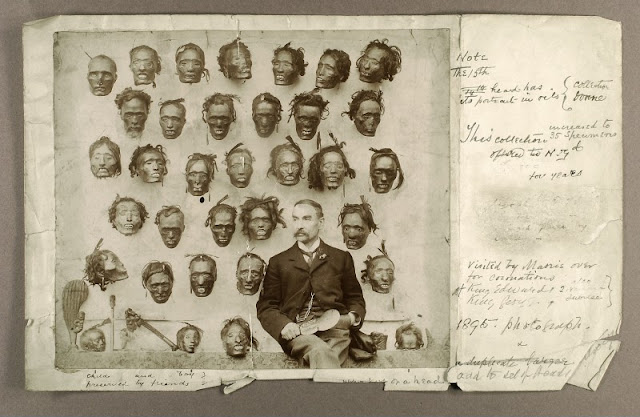I was thinking about preserved and mummified bodies this morning (what?) and wondered if anyone had ever requested to be publicly displayed after death of their own accord.
This is the online tangent I went down.:
In the 1800's British philosopher and auto icon, Jeremy Bentham [x], who passed away at the ripe old age of 84, was as per his instructions, dissected and preserved for public display.
His skeletal remains were posed and clad in his usual attire, padded out with straw and displayed in a wooden cabinet with his name engraved above in gold.
The technologies to preserve the head of the cadaver, using methods attributed to that of the indigenous people of New Zealand, didn’t achieve the desired ‘lively’ look his friends were hoping for; and so the shriveled and varnished looking dried head was exchanged for a wax model that resembled the living Bentham more closely.
The process of preparing a Maori involved removing the brain and eyes and then padding it out with a fiber crop, and either boiling or steaming the head. It would then be left to dry out in the sun for a week and then shark liver oil would be applied.
The Maori preservation of heads was deeply connected to the spirit of the deceased. It was believed that the spirit would reside within the head after death. Families would keep the heads of passed loved ones and enemies would display and berate them. [x]
Many European explorers would collect the heads, as a sort of 'exotic curiosity', and they would be displayed in museums.
One notable collector was British serviceman, Horatio Gordon Robley, who was stationed in New Zealand for five years, where he sketched the landscape, collected antiques and got to know the local people. Robley had an interest in tattoo's, and had his own arm tattooed with the image of the Buddha in Burma, a procedure performed using the tapping technique by a monk he had befriended. So it's no surprise the dried heads with their tā moko face tattooing appealed to the morbid serviceman.
This is a photograph of him with his collection n 1895.
He would have obtained these heads from a market and traded for them.
The trafficking of the items would have likely lead to murder and foul play since they were sought after items that had value. One account recalls a market seller telling the story of a slave who was being tattooed with the intention of being executed and sold as a Maori, however he escaped.
The heads would have also been traded for firearms that certain tribes would have used during the musket wars.
Thankfully, many of the Maori heads have since been returned to their place of origin and finally buried in peace, however some still remain in museum storage.
There's a nice discussion on this message board with some news reports and clippings [x]

















































